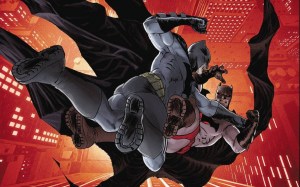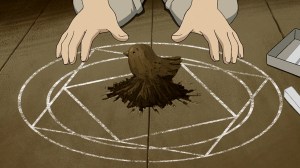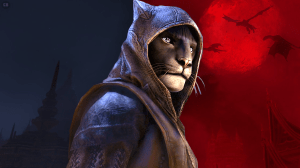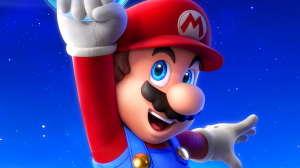Frank Miller’s The Dark Knight Returns is widely considered to be one of the best Batman comics of all time. It revitalized Batman and was the story that finally let him shake off the Silver Age, kid-friendly reputation in the public eye, which had stuck with him since the 1960s Batman series. It is easily one of the most influential stories of its time, which is the largest credit any comic book can have, considering it released around the same time as Crisis On Infinite Earths and Watchmen. This comic is almost universally beloved by Batman and general comic book fans, and yet, despite how great it was, at the end of the day it did near irreparable damage to the comic book industry that is still felt to this very day. I love The Dark Knight Returns, but it almost ruined comic books.
Videos by ComicBook.com
The Dark Age of Comics
The Modern Age of comic books is, like most ages, very loosely defined in when it started. This is especially hard to track for Marvel Comics, but with DC there is a much more concrete answer. Most generally agree that the Modern Age started with the release of Crisis on Infinite Earths, Watchmen, and The Dark Knight Returns, three comics that were released within a year of each other and totally changed DC’s approach to how they made comics. Specifically, the latter two books started the Dark Age of comics, a subsect of about fifteen years at the start of the Modern Age, from about 1986 to the start of the 2000s. The Dark Knight Returns and Watchmen were unbelievably popular, and for good reason. Comic books were still shaking off the guidelines of the Comics Code Authority, which heavily censored the types of stories that could be told. These two stories threw those guidelines out to tell much darker stories with much more adult themes, and they were beloved for it.
Yet while they were revolutionary, the rest of the comic book world took the wrong lesson from The Dark Knight Returns’ success. It introduced a grimdark and near hopeless world starring not original characters, but Batman, a foundational superhero. Batman had always been a symbol of hope against adversity, even in his darkest stories, but this comic reimagined him as a grizzled warrior fighting a doomed battle. The world is constantly facing the threat of nuclear war, the President himself declares Batman a criminal and sends Superman to bring him in, and everyone and everything is excessively violent. This dark tone inspired every single edgy and over the top redesign that the 1990s are infamous for. We saw a decade of heroes acting like agents of vengeance and rage, wearing way too much leather, and brooding far too much while being covered in far too much blood.
Now, the excessive edginess was a trend for everything in the ‘90s, but The Dark Knight Returns popularized it in comic books. But at the end of the day, that was just a passing fad. No, the real damage of The Dark Knight Returns was introducing the grimdark genre to superhero comics. Grimdark is defined as a subgenre of speculative fiction that has an excessive tone of violence, nihilism, and dystopian societies. Grimdark stories are hopeless by design, where the very soul of the world is uncaring and the heart of the human soul is selfish and untrustworthy. These types of stories are inherently incompatible with the superhero genre. From the onset, superheroes have been fantastical stories about people standing up to protect people from evil and save the day. They are literally built on a foundation of hope, and yet ever since the release of Watchmen and The Dark Knight Returns, people have been obsessed with making superheroes as dark and gritty as possible, thinking that’s why they were popular. On some level it was, but a lot of people vastly misunderstand that Watchmen is not a fully grimdark story, just one with grimdark elements, but people will always clamor that Batman is meant to be a dark avenger specifically because of The Dark Knight Returns.
The revolution of hyper-violent, disgusting comic books that try to recapture the magic of The Dark Knight Returns with its grimdark world has given us some of the worst comics to ever exist. Beyond that, this story broke through the stereotype that comic books were made for kids, but because of how it did that, everyone is convinced that the only way superhero stories can be made for adults is if they are grimdark, which makes no sense. The Boys, The Killing Joke, and every Punisher title released after it are all trying to sell the idea that this is what adult comic books look like. They have to be hyper-violent, overly sexual, and tell the reader to their face that things are bad and can only get worse. This doesn’t make these stories bad, but it does make the people who shout how these are more mature comics by default very annoying. Everyone still says that Batman can’t be a happy character or smile, and that is in no small part because of this comic book.
I love The Dark Knight Returns, but ever since its release there has been an unyielding community who argue in bad faith that superhero comics should be like it or they’re made for babies. It’s an insane statement, but sometimes it even seems like the comic book industry itself agrees, constantly greenlighting stories that try to become the next The Dark Knight Returns by being as “mature” as possible. This is a great story in a vacuum, but the damage it did to comic books is almost entirely unforgivable. Superhero stories are meant to be hopeful. They don’t always need to have the perfect happy ending and save everyone, but they should inspire hope. Grimdark stories can’t do that, and The Dark Knight Returns unfortunately cursed us with far, far more grimdark comics than there should ever be.









